
Written in 2006 by our very own team member, Gloria Dauphin
On August 29, 2005, a community and its animals were irrevocably and tragically altered. Hurricane Katrina, one of the deadliest and strongest hurricanes ever recorded, exacted a devastating blow to the Gulf Coast leading to the loss of thousands of lives, both people and animals. The destructive storm and its aftermath were horrific and unprecedented. That it ravaged the physical landscape in a catastrophic blow was only one level of its strength. Its blow to the mental landscape was just as extreme. When people experience or witness a trauma on the scale of Katrina it strips away all the extraneous facets of life and brings us back to our core. Our connection to family and friends, our bonds of love and friendship become as essential as food and water. Amid the chaos emerged one of the most enduring of bonds, the human-animal bond. During the hours, days, weeks and months following the storm that bond has only strengthened. In our relationship with animals, it became painfully clear that we need them as much as they need us.
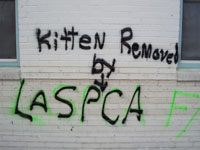
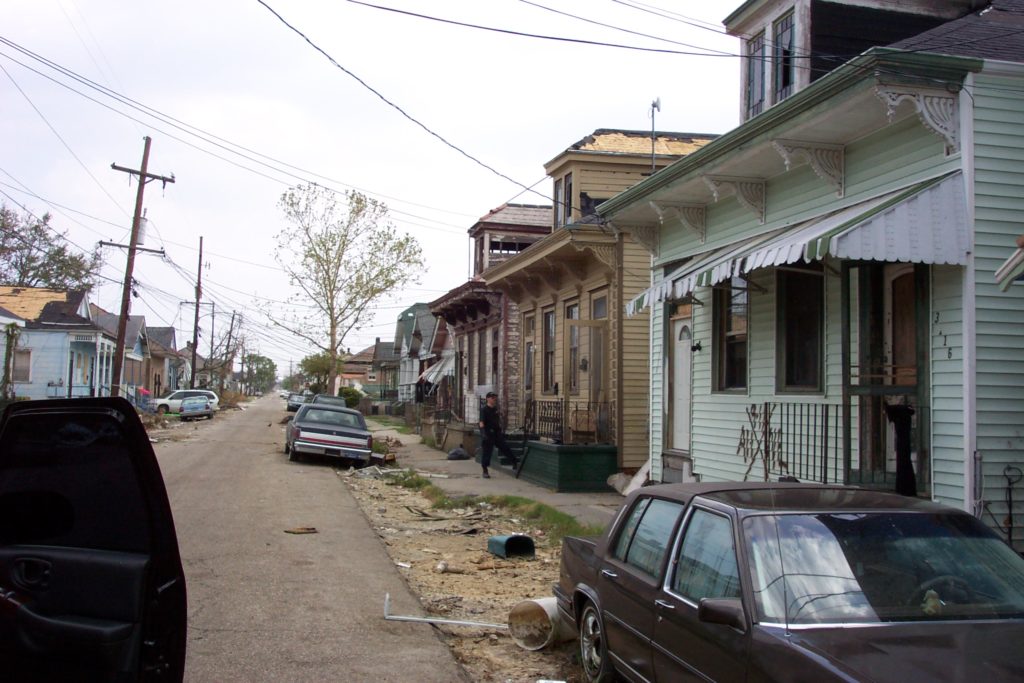
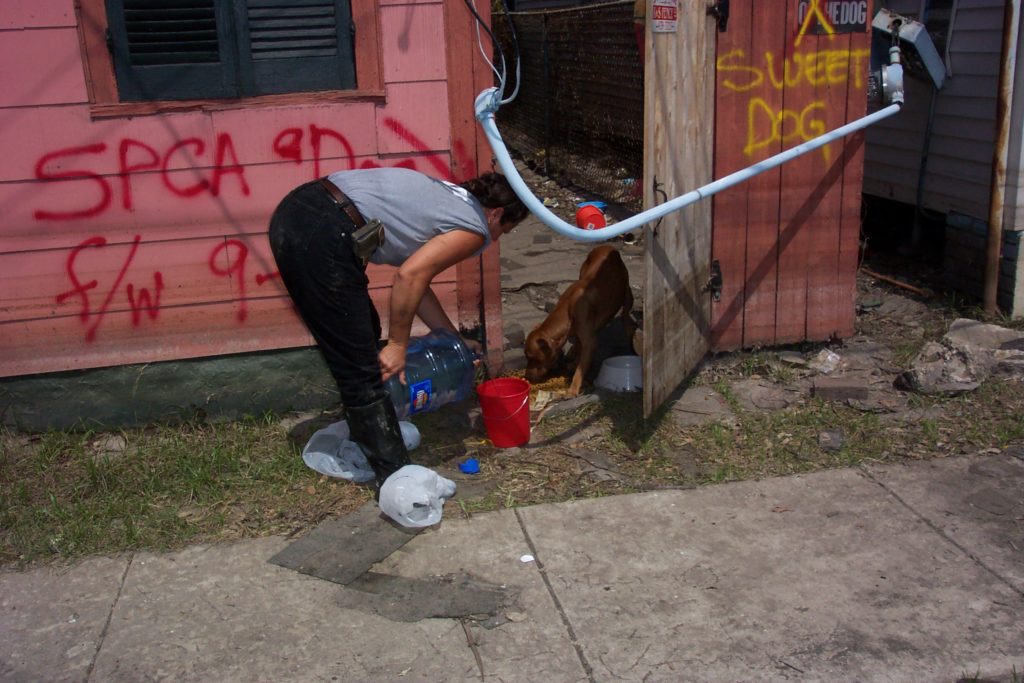
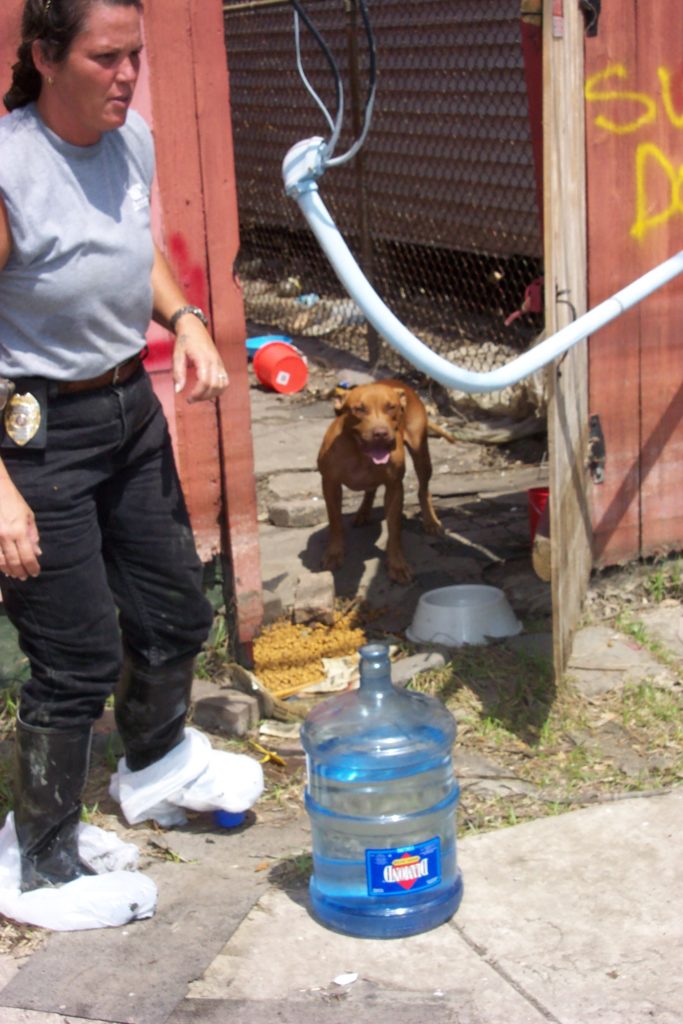
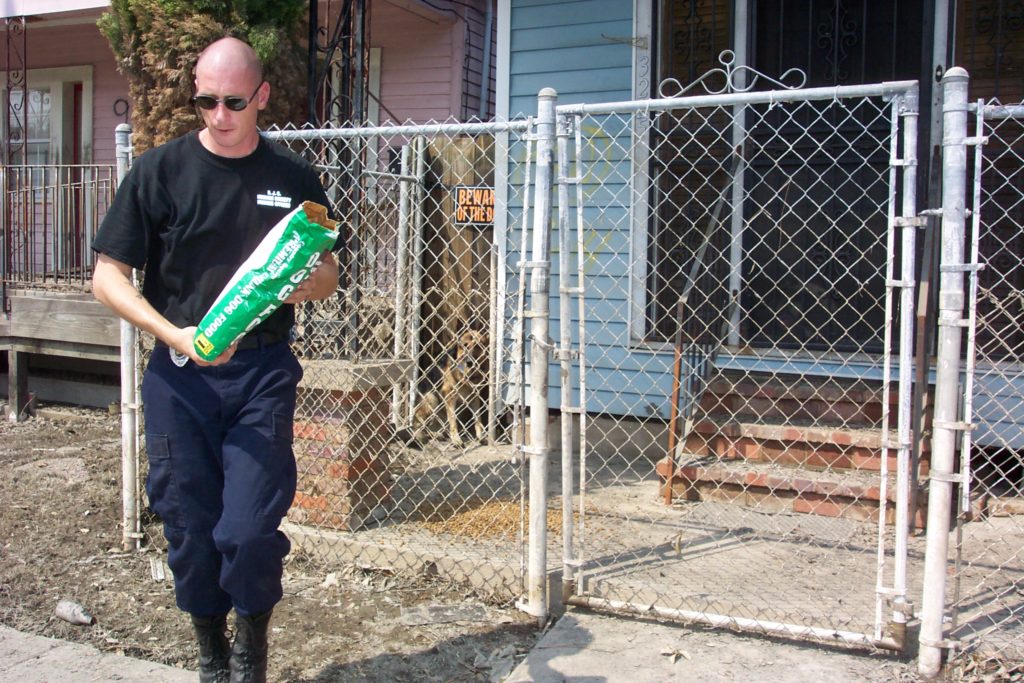
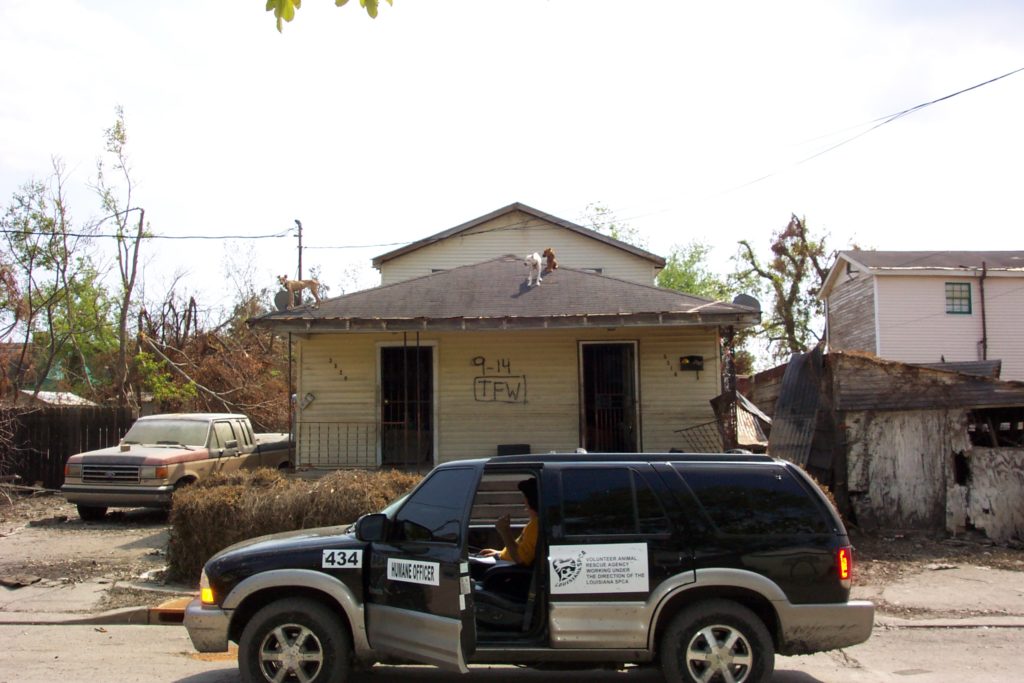
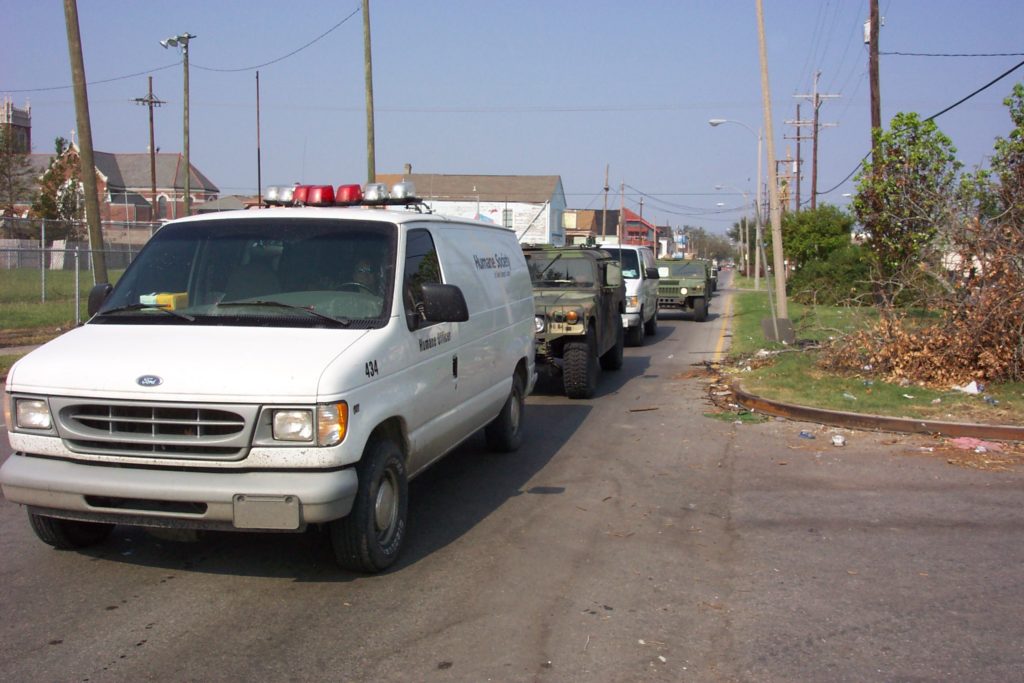
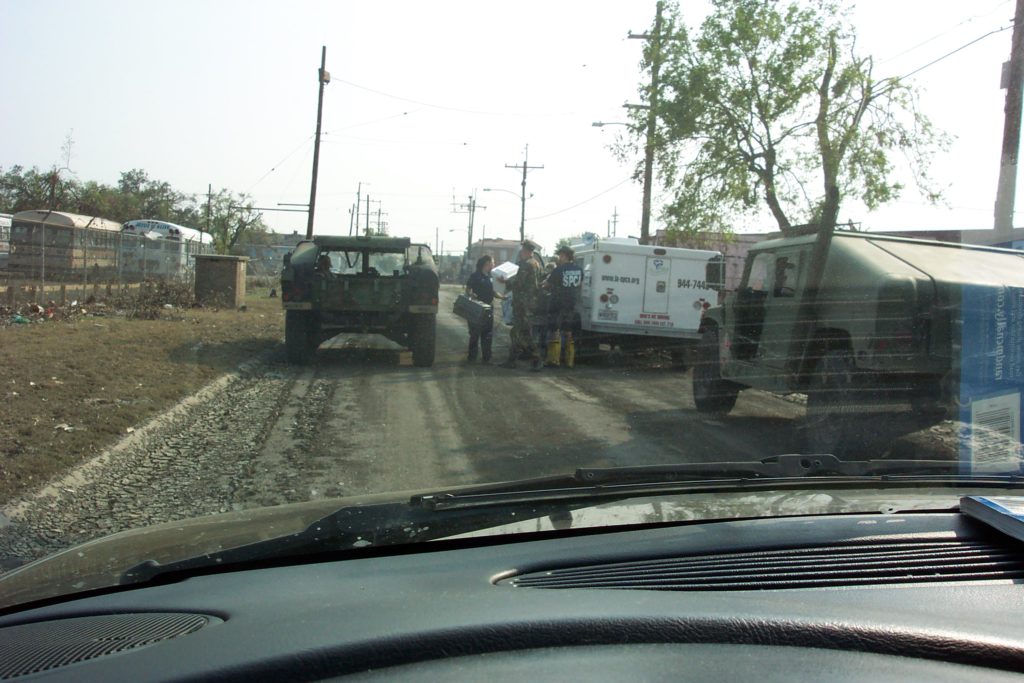
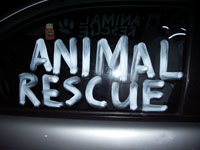
A stress level of 300 points is the benchmark of extremely high stress. Nearly one year after Hurricane Katrina, the Louisiana SPCA’s team stress level test came in at an average of 1,300 points. By those standards, we should have all dropped dead from heart attacks months ago.
August 27-28, 2005: 263 Animals Safely Evacuated
It was nothing short of the calm before the storm. Early Saturday morning, August 27, the Louisiana SPCA put into place the “trigger point” plan. The plan outlined steps taken in the event of a hurricane in the Gulf of Mexico that included New Orleans in its possible strike zone. In the case of a major threat, Category 3 or above, shelter animals would be evacuated 72 hours before an anticipated landfall. Evacuations were a reality of living in New Orleans and had been done many times in the past, starting with Hurricane Georges in 1998.
So on Saturday afternoon, August 27, with 263 shelter animals safely loaded into climate-controlled vehicles, Louisiana SPCA’s executive director, humane officers and animal care attendants made the arduous contraflow trek from New Orleans to the Houston SPCA. The staff and animals arrived in Houston, Texas late into the night. Once the animals were unloaded and sheltered, the staff waited – fully expecting to return to New Orleans in a few days. That initial wait would prove to be the last calm before the storm.
August 29, 2005: A Horrific Storm
Riding out the storm in Houston, the staff remained transfixed in front of radios and television screens, hearing the news reports that continued to escalate. Doomsday scenarios were being projected as the storm projections increased to a Category 5 and then were reduced to a Category 3 a few short hours before reaching Louisiana. Katrina however turned toward the Mississippi coastline at the last minute.
The first reports were that New Orleans had again dodged a major bullet. But soon that news would be overshadowed by a horrific reality. The levees and floodwalls, built after Hurricane Betsy ravaged New Orleans in 1965, were failing. We would learn the full extent of that damage in the coming days, but from all reports New Orleans was filling like a bathtub. Neighborhoods throughout New Orleans were becoming submerged as breaches compromised both levees and floodwalls and water poured from Lake Pontchartrain into neighborhoods via the many waterways surrounding the city. Almost no area was safe including Gentilly, Lakeview, New Orleans East, Mid City, the Lower Ninth and the Upper Ninth Ward – the Louisiana SPCA’s own neighborhood. The Louisiana SPCA’s Japonica Street shelter was so close to the Industrial Canal you might as well call them backdoor neighbors. It had been the Louisiana SPCA’s home since the late ‘50s. Tragically, in 1965 many animals lost their lives when they were not evacuated from the shelter during Hurricane Betsy. Forty-one years later, the Louisiana SPCA’s shelter animals were thankfully out of harm’s way, but no one could project just how many animals remained after Katrina and were now in peril.
The Louisiana SPCA had to return to New Orleans immediately.
August 30-31, 2005: Creating a Shelter Out of Thin Air
The Louisiana SPCA was faced with an unimaginable and overwhelming task. Its shelter was destroyed. A shoestring staff had traveled to Houston and the remaining staff had evacuated to other cities and states. There was an urgent and pressing need. New Orleans has always suffered with a high stray population and there were certainly thousands of strays that were victim to the storm. For those that had survived they would need immediate rescue and shelter. The Louisiana SPCA also realized that there were residents who did not or could not evacuate and their animals would need rescue and shelter as well. No one however could imagine just how high those numbers would be.
Laura Maloney, the Louisiana SPCA Executive Director at the time of Katrina, worked the phones with great urgency. A shelter had to be created. A staff had to be housed. Supplies were needed. The Houston SPCA provided the Louisiana SPCA with cages and basic sheltering supplies. After communicating with the Louisiana Department of Agriculture and Forestry, a shelter was created at the Lamar-Dixon Expo Center in Gonzales, Louisiana, 60 miles west of New Orleans near Baton Rouge, Louisiana.
The Lamar-Dixon Expo Center, normally an equestrian center, became what would ultimately become the largest animal shelter and animal rescue operation in U.S. history.
August 31 – October 15, 2005: Thousands of Animals
On Wednesday, August 31, the Louisiana SPCA entered the New Orleans area for the first time since Katrina had made landfall. They entered a scene that would crystallize the animal tragedy that unfolded in the aftermath of Katrina. Bus loads of residents who had not evacuated were stranded on a major U.S. interstate in Metairie, an outlying area of New Orleans. With them were their pets that were not allowed on the buses transporting the humans out of the danger zone. These were the first animals that arrived at the Lamar-Dixon Expo Center. Louisiana SPCA staff also knew they had to get into the city to begin rescuing the animals that were stranded. Their first stop in New Orleans was the Mercedes-Benz Superdome. But their efforts on that first day were cut short by another scene that would symbolize Katrina’s tragedy.
Gunshots, violence and fires were erupting at ground zero. Officials ordered the Louisiana SPCA to leave. New Orleans had become a combat zone.
When they were able to return, what followed in the coming weeks was an unprecedented post-disaster response to save animals. Help arrived from across the country. Nothing had ever before galvanized a cavalry of animal lovers and animal welfare agencies on such a scale. Volunteers poured in as did donations both monetary and in-kind. Animal welfare groups of all philosophies and sizes converged at Lamar-Dixon Expo Center to assist the Louisiana SPCA. Rescue groups mobilized at 5:30 a.m. every day and returned after dark filling the makeshift shelter with traumatized animals – dogs, cats, horses, pigs, birds, snakes – all that you can imagine. Thousands of phone calls also poured in from residents now scattered all across the country sending out an S.O.S. to have their animals rescued. With more than 7,000 addresses on the rescue list in just a few short days, it was utter chaos.
The Louisiana SPCA staff witnessed scenes that were heartbreaking, haunting and unforgettable. They found animals so starved they were walking skeletons. They found traumatized animals trapped inside homes or worse. They found the animals that did not survive; those that drowned tied to fences and trapped in crates; those that were only shadowy remains; those that suffered horrific and painfully slow deaths in the worst imaginable ways possible.
All told, approximately 8,500 rescued animals entered the Louisiana SPCA’s Lamar-Dixon Expo Center. But there were several thousand others rescued by groups working outside the official rescue efforts. It’s estimated that over 15,500 animals were ultimately rescued. The exact number of animals that died during Katrina is unknown but it’s estimated to be in the tens of thousands.
October 15 – December 9, 2005: Loss, Reunion & Starting Over
That animals were rescued was an answered prayer; but being reunited with their owners would prove to be a more difficult prayer to answer. Of the 15,500 animals rescued during Katrina only 15% to 20% were ever reunited with their owners. Although it appears to be a low percentage, it fares better than the national averages of 10%; but for the owners searching for their pets percentages hardly matter. During the rescue operation, animal transportation became a necessity as more and more animals filled Lamar-Dixon Expo Center. Shelters and fostering agencies stepped in to help because there was no single facility in Louisiana large enough to house them until their owners could be located. This resulted in rescued animals being transported all across the country for holding in hopes of future reunion. Unfortunately, clear documentation identifying where animals were found and ultimately transported was sorely lacking, a casualty of both the chaos of Lamar-Dixon Expo Center and the rescue groups working outside the system.
To understand the hardship of starting over, it’s important to note where the Louisiana SPCA was pre-Katrina. The Louisiana SPCA had been viewed as one of the best animal welfare organizations in the country with a solid staff of 65 individuals and a strong board of directors. Post-Katrina the organization had dwindled to 15 of its original staff, all struggling with deep personal and professional losses. The infrastructure had been shattered. Staff was also shattered. Of the seven original humane officers who tirelessly rescued animals during the Lamar-Dixon Expo Center days only two would return with the organization to New Orleans. The others resigned due to the overwhelming physical and emotional trauma they experienced during that time. Shortly thereafter one of the two original officers would also resign.
With this tragic backdrop, the Louisiana SPCA returned to New Orleans to re-establish its organization and provide care and support for a community of people and its animals that had been fractured and ripped apart. The shelter on Japonica Street was destroyed and finding a new location was as challenging as setting up Lamar-Dixon Expo Center. A property search was taking place concurrent to the rescue operations. In late September a location was secured.
On October 15, the shelter set-up began in the New Orleans neighborhood of Algiers. Algiers had been spared the flooding that had destroyed most of New Orleans but it still bore the scars of Katrina. Wind had damaged structures, including the warehouse now leased by the Louisiana SPCA, and where littered the roof. Well-designed animal shelters are very specialized structures that require unique elements like proper drainage, air control and well thought out space configuration, especially when you are an “open admission” shelter accepting any and all animals.
Creating an adequate shelter in the new temporary facility pushed the staff to its limits. The location was never intended to house animals and did not have even the basic necessities like plumbing and drainage critical to animal shelters. The staff, with the help of volunteers from the San Diego Humane Society, assembled hundreds of kennels. Tents were erected on the grounds as additional housing. A “M.A.S.H.-like” tent was created to provide a minimal setting for the one remaining veterinarian and a skeleton clinic staff of two to treat and perform surgeries on our growing shelter population. The kennel staff and sheltered animals coexisted amid on-going construction. It was a physical and emotional hardship for all involved. Caring for animals, cleaning and maintaining a shelter and keeping it free of diseases under normal circumstances is a challenge. Doing so in the midst of a structure being built requires a Herculean effort.
As the warehouse was being converted into a shelter, humane officers continued rescuing the animals that were still victims of the storm. They had been working nonstop since Katrina and continued to do so. Trailers served as offices for the staff. During this time the Louisiana SPCA operated only as an animal control facility. All the organization’s other programs – adoption, education, a public clinic, community outreach, volunteer program – were wiped out. The staff was too small and the urgency of saving animals still on the streets and helping owners find their lost pets remained the order of the day. And quite frankly the days and nights were never long enough.
Nearly 80% of the staff was new and most had never worked in the animal welfare industry. Whether new or experienced everyone struggled with personal and professional losses and many worked through a fog of post-traumatic stress. During this time the organization relied heavily on the support of those from around the country who came to fill in the gaps.
Those supporters were the stars on the horizon. The assistance received during the rescue operation only grew when returning to New Orleans. There were armies of supporters to whom the Louisiana SPCA is eternally grateful. The ASPCA and The Humane Society of the United States helped set up a new temporary facility and provided financial and staff support. Staff from other shelters came to New Orleans, rolled up their sleeves and did summersaults helping to establish the new temporary facility. All worked miracles in record time – everything from negotiating with vendors to training staff. There were so many who came to help and made New Orleans their temporary home including the San Diego Humane Society, the Humane Society of Broward County, the Humane Society of Missouri and the Nebraska Humane Society, to name a few.
With the infrastructure of New Orleans also destroyed, both mail and phone services took months to restore to full capacity. Having a limited number of phones and relying heavily upon cell phones the Louisiana SPCA was flooded with calls of those still looking for their pets. The emotional pleas of those desperate to find their animal companions fueled the staff to keep moving forward.
In November 2005, in hopes of attaining a full, comprehensive picture of New Orleans’ animal situation post-Katrina, the Louisiana SPCA established a multiagency, independent assessment team to evaluate the state-of-animals in the city to effectively plan for the continued recovery of New Orleans animals. In general, the majority of the team members were surprised by the low number of stray animals spotted in a city that has typically had a high stray population. Although not sizably visible during the assessment, teams agreed that there were more strays than appeared during our study. Some of the volunteer rescuers suspected that there were a number of strays who could not be quantified because of feeding programs by well-meaning but inexperienced individuals that made it more difficult to locate and humanely trap strays.
August 2006: A Long Road Ahead
Looking back, it’s almost unimaginable that the Louisiana SPCA was able to not only survive the unprecedented hardships, but also overcome them. Most staff lost their homes, clothing and all their possessions. Those who worked the front lines during the rescue operation worked nonstop from the moment they left New Orleans on August 27. There was no break in anyone’s lives – they had no chance to assess or even comprehend their personal losses. They gave their all to the Louisiana SPCA and the animals that needed rescue. The staff performed like machines. And when we returned to New Orleans, the months that followed were fraught with change and uncertainty and a constant need to get it done and move on to the next hurdle, the next project, the next program.
In July 2006, the Louisiana SPCA leadership team took part in a two-day workshop conducted by a group of organizational psychologists in a project called KARE – Katrina Aid Relief Effort. KARE donated their professional services to assist and particularly strengthen the team building skills of organizations devastated in the aftermath of Katrina. An exercise in the workshop assessed the individual levels of stress. A stress level of 300 points was the benchmark of extremely high stress. The Louisiana SPCA’s staff stress level came in at an average of 1,300 points. By those standards, they should have all dropped dead from heart attacks months ago.
On August 20, 2006 a pet memorial and traditional New Orleans “jazz funeral” was held to honor all the animals that lost their lives as a result of Hurricane Katrina. That the memories and aftershocks of Katrina will remain with us for a long time to come is undeniable. It has impacted every facet of life for a community of people and its animals. The response and reaction to the animal tragedies of Katrina has hopefully marked a turning point in how we view and treat our animal companions. Reflecting on Hurricane Katrina compels us to do no less.